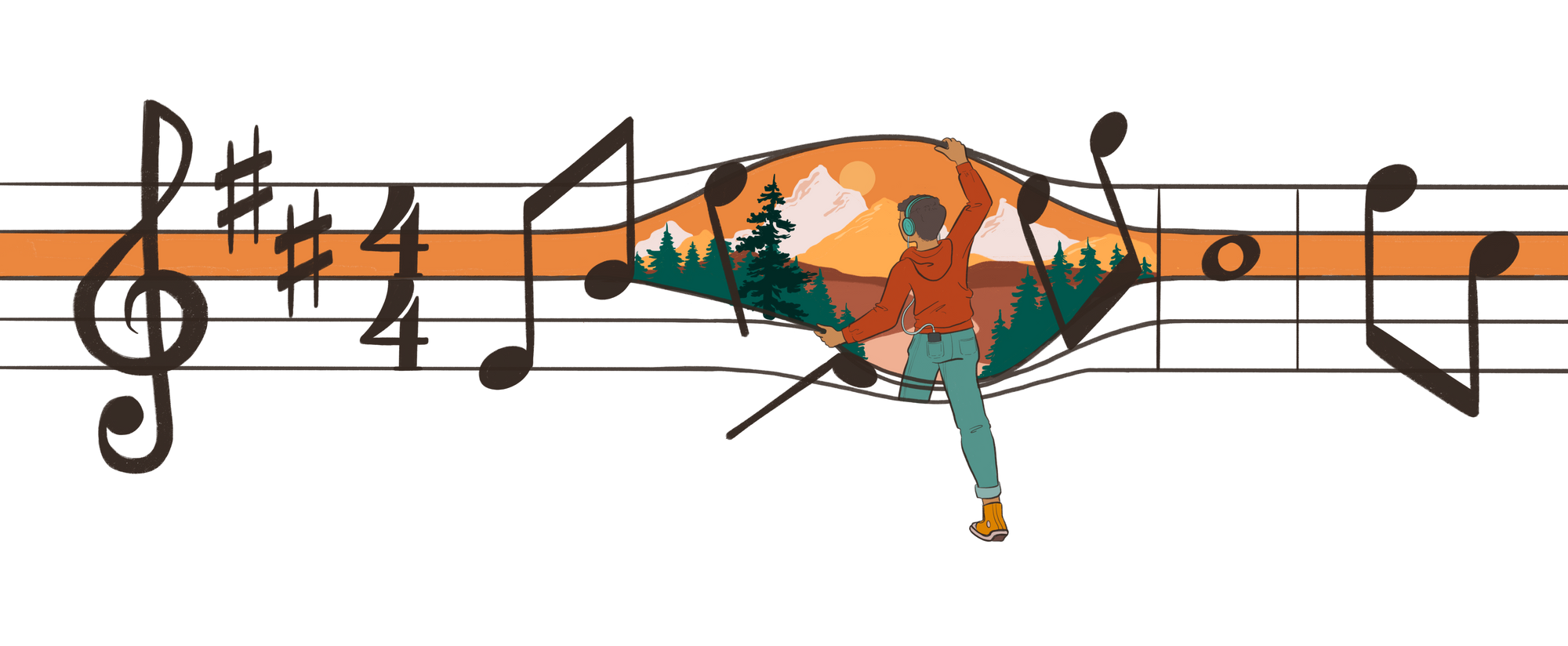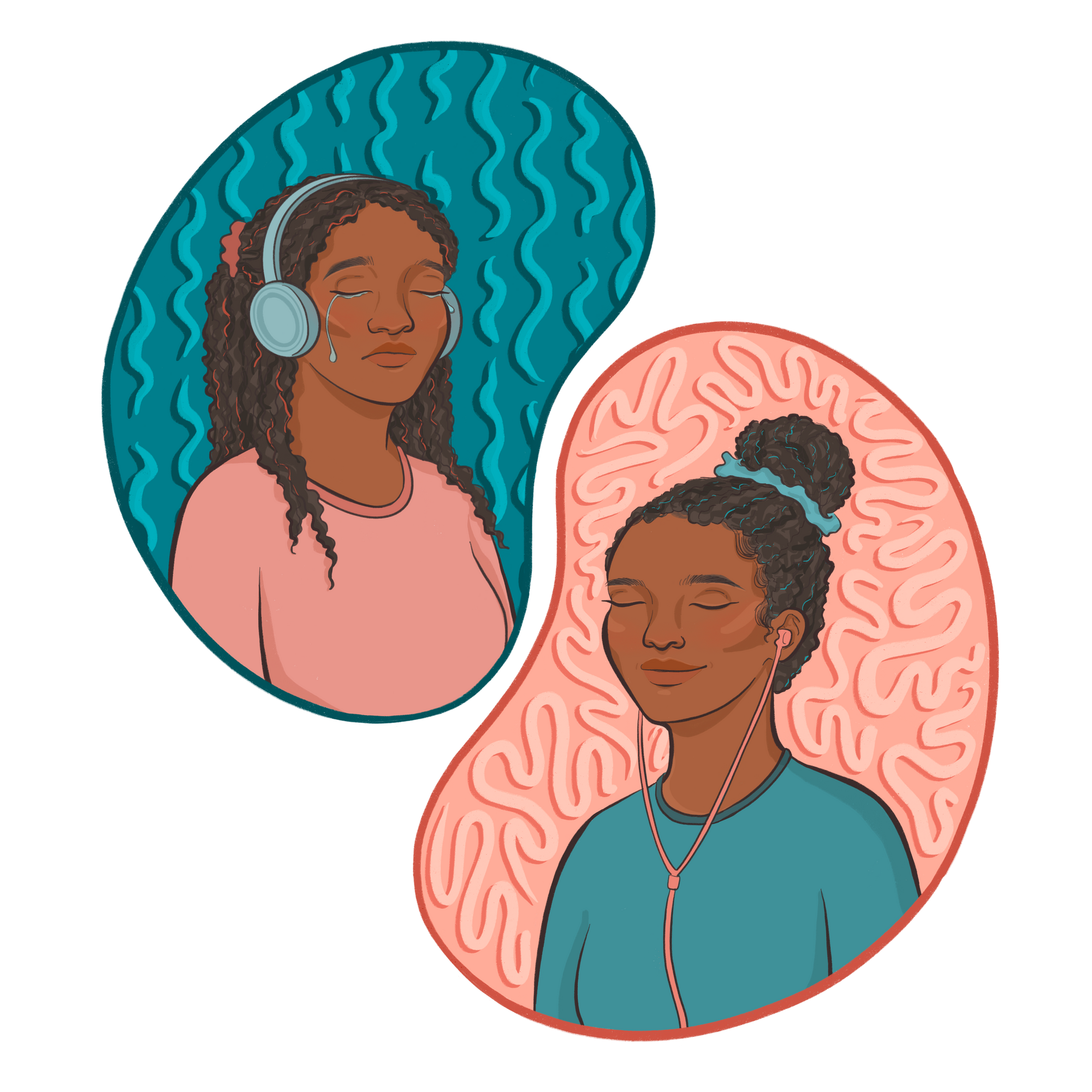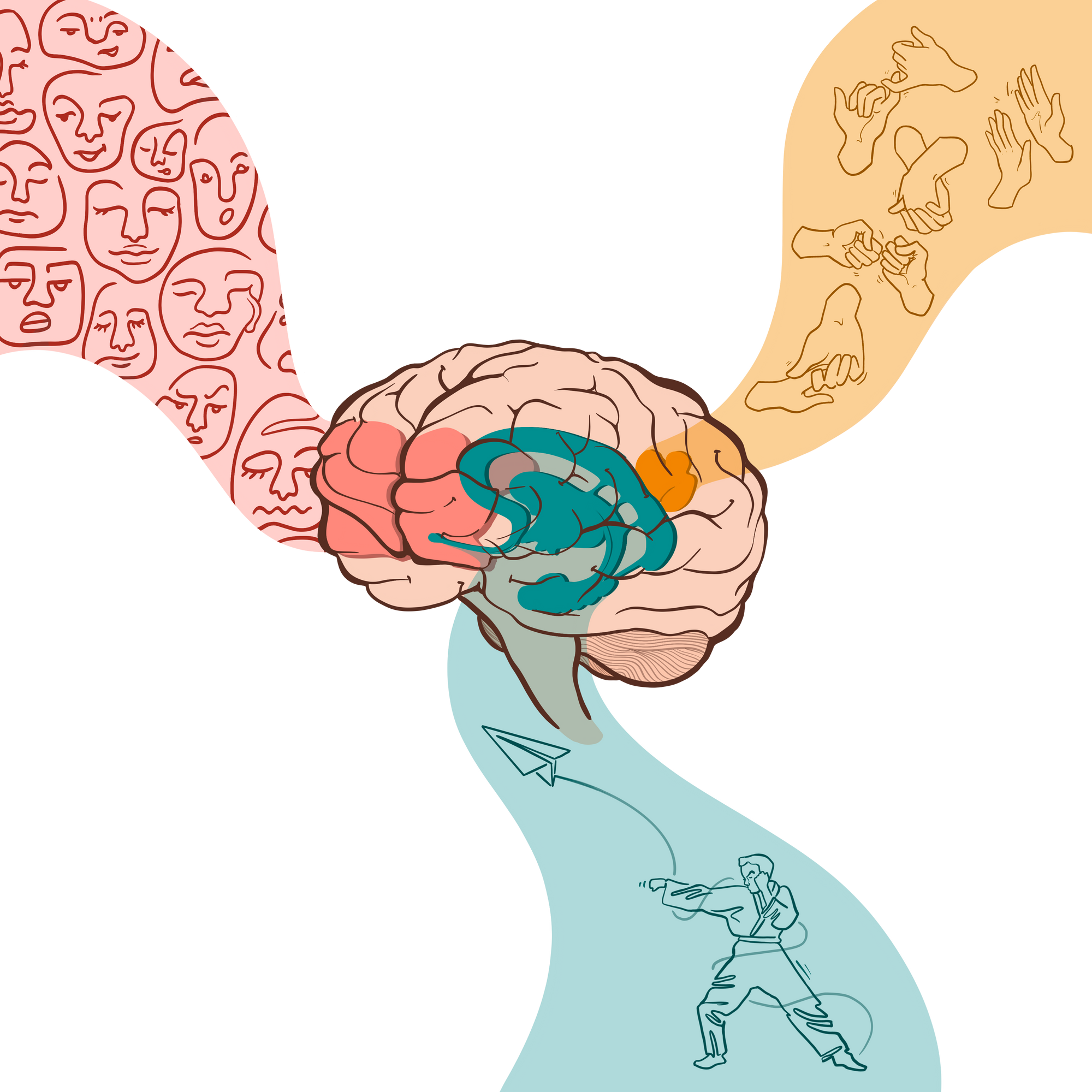Introduction
While we wait in elevator rides or drive to the grocery store, the majority of us don’t sit in silence: we go about our day-to-day lives accompanied by songs and soundtracks. Music is integral to almost all cultures and has been ever-present throughout history. Because of its prevalence, it’s no wonder that the global music industry is expected to surpass 65 billion US dollars by 2023 [1]. However, the global power of music arguably lies not in its economic influence but in the strong emotional response it elicits from its listeners. In particular, music makes us feel empathy. Empathy can be defined as, “an emotional response that stems from and is congruent with the other’s emotional state or condition” [2]. An emotional response when listening to music can arise from any aspect of the song; the lyrics, to the instruments and tempo, the melody, etc. – all of which work together to influence the mood of the music. In order to understand how peoples’ capacity for empathy influences the way they are impacted by music, we must consider its mechanisms on a neurological level and the effect music may have on a social level. This article will go over two pieces of primary research; the first showing how those capable of different levels of empathy process music in their brains while the second shows the way that music can affect the mood of an individual. From recent research, we can see that those with a greater capacity for empathy display heightened activity in the prefrontal cortex, which will be discussed in depth later in this article, when listening to music, which may indicate that music can strengthen an empathetic individual’s emotional response.
How our brain perceives sound
Our brain processes music following the initial steps all sounds go through. When we hear something, sound waves enter through the outer ear and are mechanically transduced through the middle ear and to the inner ear where the vibrations cause fluid near the basilar membrane of the cochlea to ripple. This allows the membrane to distinguish various components of the music such as pitch and volume [3]. The vibrations are ultimately converted into electrical signals that travel along the auditory nerve to the brain [4]. From there, various parts of the brain separate and interpret aspects of the music we are listening to. For example, the parietal lobe, located toward the back of the brain, processes the vibrations of the music in relation to its rhythm. Meanwhile the planum temporale, located on the temporal lobe, plays an important role in auditory processing by distinguishing and understanding language. Next, the auditory signals activate the temporoparietal junction of the brain, processes our social interactions and allows us to analyze and understand the behaviors and intentions of others. The prefrontal cortex, on the other hand, located at the front of the brain, processes much of the emotions evoked by music. The prefrontal cortex is significant in its use to help us feel emotions and is usually activated during listening. As such, it is a vital component in deriving an emotional significance from music as well as our behavioral responses to it [3].

Music in the Empathic Brain
One important aspect to understanding the relationship between music and empathy is to observe individual differences of neurological responses to music for people with various capacities for empathy.
Three researchers at UCLA explored this idea to determine if and how empathy modulates neurological responses to music given individuals’ familiarity with the song and their genre preferences while gauging individual differences in empathy capacity. Twenty undergraduate non-music major students were recruited as the participants for this study. In order to understand the influence of music on emotional responses, researchers can use various methods to quantify individuals’ empathy. Overall, empathy is challenging to measure. Most quantifications of empathy are solely based on individual self-reported responses which can lead to biased results. In this study, they chose to utilize one of the most well-known and standard methods, the Interpersonal Reactivity Index (IRI). Although the IRI is a self reported test, it is one of the oldest and most validated measurements of empathy thus making it suitable for this work. As such, each student was then asked to take this IRI test, which quantifies each individual’s empathetic capacity by asking them to numerically rank their affinity to various socioemotional scenarios on a 5-point scale. After the test, the participants were given a score between 54 to 96 with a mean score of 79. Those with an above-average score are considered to have “higher” levels of empathy [2].
After being assigned a score, the twenty participants were asked to listen to 16 second intervals of recorded music. Half these were familiar songs while the other half were unfamiliar songs selected by the researchers based on the musical preferences that each participant expressed. This was done to control the effects that memory bias could have on the students’ reactions to the music [2]. Each student then listened to their selected music while being scanned in an fMRI. The fMRI compiles images of the students’ brains to obtain detailed three-dimensional maps of internal neural structures and their activity over time [5]. These maps allowed the researchers to determine the correlation between empathy and emotional response to familiar and unfamiliar music.
The data showed that participants with above average IRI scores had increased activity in the prefrontal cortex, temporoparietal lobe, and the areas of the limbic system when listening to both familiar and unfamiliar music relative to participants with lower IRI scores [2]. As mentioned earlier the prefrontal cortex is responsible for emotional processing and is active both when we are experiencing our own emotions and when we are experiencing emotions empathetically [6]. Increased activity in the temporoparietal junction part of the brain would suggest this response is tied to social cognition indicates empathy [7]. Finally, the limbic system is responsible for the reward system within our brain. Increased activity in the limbic system suggests that more empathetic individuals perceive familiar music as a positive reward [2].

Music Enhances Empathy
Another study, conducted by researchers from National Taiwan University and UC San Diego showcased how music can increase the experience of empathy. Specifically, this study focused on understanding how music influences emotion when watching a film. Researchers ensured that all participants in the study were capable of empathy by conducting a pre-scan test: Each candidate was asked to match 10 different music excerpts with 10 different verbal descriptions of emotional scenes. If the participant was able to correctly match at least 80% of the music with verbal stimuli, they were allowed to participate. A total of 16 participants in their mid-20s qualified for the study. Each one was asked to listen to 10 different 15-second instrumental musical excerpts. Out of these 10 excerpts, the researchers determined that five of them expressed positive emotions (happiness, fun, etc.) while the other five expressed negative emotions (fear, despair, etc.). During each trial, the participants were asked to imagine certain emotionally-charged scenes that were given and described by researchers while either listening to happy or sad music or in silence. For example if the individual was given an emotionally-negative scene like, “A young revolutionary is sentenced to death, and cries out in anguish in protest of the injustice” then their correlating music would be emotionally-negative as well. After being given a scenario, the participants underwent an fMRI scan while imagining one of these scenes and either listening to mood matching music or laying in silence. After the scan, the participants were asked to press a positive or negative response button depending on their emotional response to the given scenario and music [ 8 ].
Results showed that participants were more likely to push the button that correlated with the emotions associated with their given scenario if they were also listening to mood matching music. Music amplified the participant’s likelihood of experiencing emotions congruent with those expressed by their given scenario and this was interpreted as music influencing increased empathetic responses. fMRI analysis indicated that participants listening to music had activity within the temporoparietal junction and the limbic system (specifically, the hippocampus and amygdala) that was not present while the participants weren’t listening to music. An increase in activity in the temporoparietal junction shows a connection to how we understand our social interactions as it's been previously established that the temporoparietal junction plays a central role in both our emotional and social processing. Activity within the limbic system, similar to the previous study, shows a connection to how music can play with our emotions [8].
Additionally, the study showed that music increased the likelihood that the participant would feel happy or sad correlating to the scenario they were given. For example, if a participant was asked to imagine a descriptive, saddening scenario then they were more likely to feel sad coming out of the fMRI if they were also listening to sad music than remaining in silence. These findings were also apparent when dealing with positive emotions and scenarios [8]. By having this participant feel more negative or positive after their fMRI, they were then able to empathize more with the scenario, thus showing the effect that music can have in increasing one's empathy.
Conclusion
Through the knowledge gained from these studies, we can begin to understand that listening to music and experiences of empathy are highly interrelated. The first study shows those with higher empathetic capabilities have a higher level of activity within the prefrontal cortex, temporoparietal lobe, and the limbic system while listening to music. The second study indicates that music can increase the likelihood of our empathetic responses and ultimately enhance our emotional relationship with the music. But for now, the next time you open your Spotify app it may be interesting to think about what is going on in your brain at the same time.
References
[ 1 ] Department, P., & 8, J. (2021). Global Music Industry Revenue 2023. Statista. https://www.statista.com/statistics/259979/global-music-industry-revenue/
[ 2 ] Wallmark, Z., Deblieck, C., & Iacoboni, M. (2018). Neurophysiological Effects of Trait Empathy in Music Listening. Frontiers in behavioral neuroscience. https://www.ncbi.nlm.nih.gov/pmc/articles/PMC5897436/
[ 3 ] Warren, J. (2008). How does the brain process music? Clinical Medicine, 8(1). https://www.ncbi.nlm.nih.gov/pmc/articles/PMC4953706/pdf/32.pdf.
[ 4 ] Müller, U. (2008). Cadherins and mechanotransduction by hair cells. Current opinion in cell biology. https://www.ncbi.nlm.nih.gov/pmc/articles/PMC2692626/.
[ 5 ] Logothetis, N. K. (2008). What we can do and what we cannot do with fMRI. Nature News. https://www.nature.com/articles/nature06976.
[ 6 ] Siddiqui, S. V., Chatterjee, U., Kumar, D., Siddiqui, A., & Goyal, N. (2008). Neuropsychology of prefrontal cortex. Indian journal of psychiatry. https://www.ncbi.nlm.nih.gov/pmc/articles/PMC2738354/.
[ 7 ] Dixon, M. L., Thiruchselvam, R., Todd, R., & Christoff, K. (2017). Emotion and the prefrontal cortex: An integrative review. American Psychological Association. https://psycnet.apa.org/record/2017-26169-001.
[ 8 ] Li, C.-W., Cheng, T.-H., & Tsai, C.-G. (2019, April 24). Music enhances activity in the hypothalamus, brainstem, and anterior cerebellum during script-driven imagery of affective scenes. Neuropsychologia. https://www.sciencedirect.com/science/article/pii/S0028393219300879#sec3.
